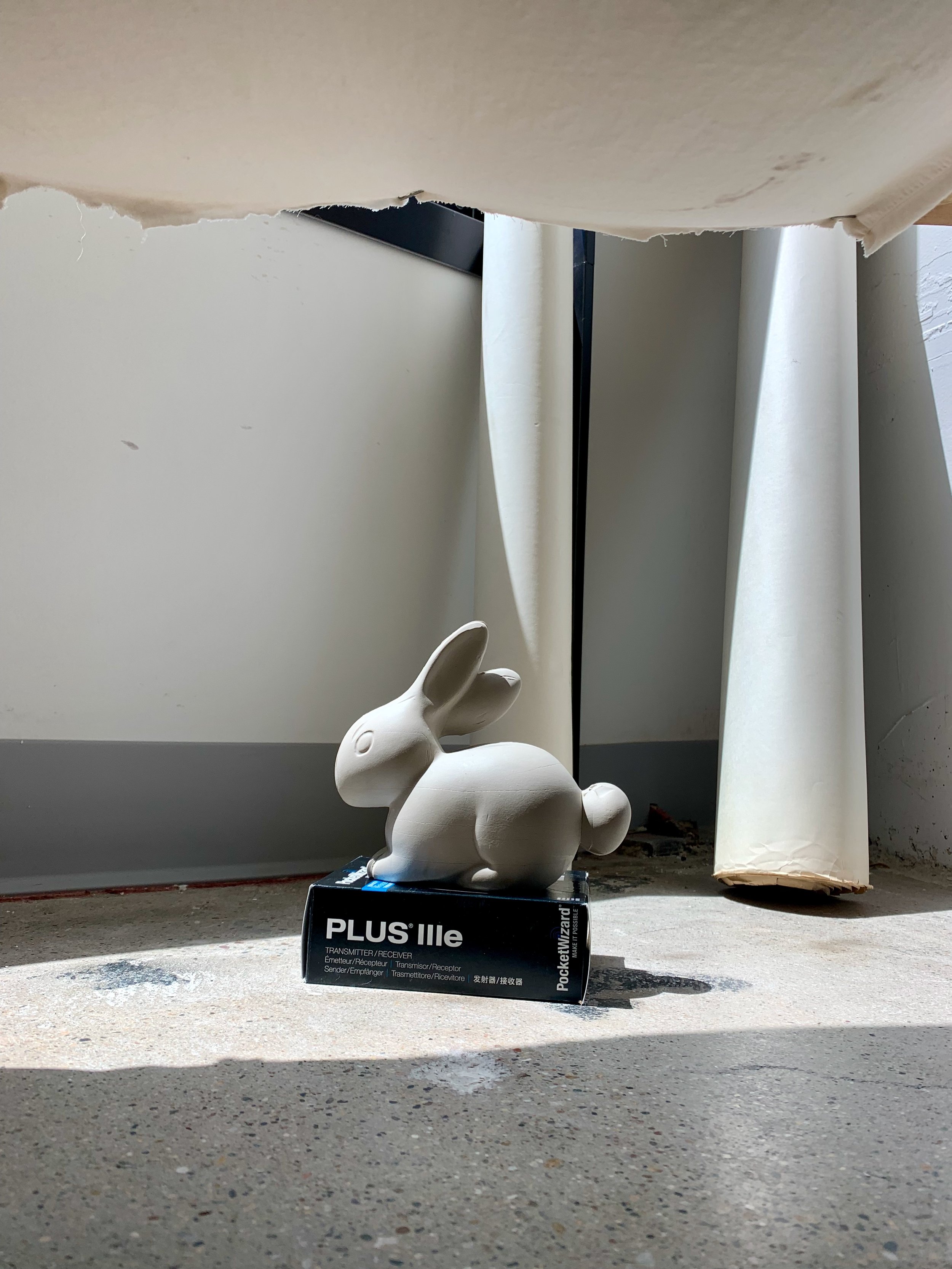The intention was that these armadillos would be manipulated upon creation. When planning out the project more than eight months ago, I envisioned armadillos that were pulled apart as part of the production. To best ensure the work would translate the feeling of hardship, of vulnerability on display, I knew I’d need to damage the work before it was complete.
The first object I made in the collection from the first mold I purchased, was a porcelain rabbit. I couldn’t believe it when it came out nearly perfect. I set it in the spot where afternoon sun streams into my studio so it could dry.
The next set of creatures to test my casting skills prior to heading into the classroom would be a set of birds. Small enough that all three could fit in your hand, these porcelain birds seemed almost sweet: one with its wings outstretch, one burrowing its beak down and to the side as if bashful, the other looking innocently straightforward. I held him between two fingers with my thumb on his little bird belly, and crushed him.
And then I cried. It felt like harm.
I’d retell this story to Dara Green, the Central Academy Pottery Instructor (and in my opinion, one of the most amazing creative women to ever have in your corner) and we both agreed the classroom intention had to change. While the grant proposal I wrote called for manipulated armadillo volvations, it couldn’t be intentional. I couldn’t ask students to willingly destroy our creations because in doing so, we’d lose ourselves or confuse ourselves with those that are doing the harm.
Days later I’d begin my three weeks with the Central Academy potters, walking all six periods and over 140 students through why I was there, what I’d learned in the preceding weeks, what it feels like to be pulled apart and how we’d, instead, be making a collection of creatures that would be perfect however they came to be. Nothing would be cast aside.
As the days progressed, we’d pour and discuss and open our molds and be astonished — at the work that worked and the work that didn’t. I overheard two students, one choosing to pour a snail and the other, its shell, talking about how maybe the shell could represent all of the pressure society puts on him. And that maybe his shell could be made of salt to express what it’s like to be constantly carrying all that weight, his refuge but inevitably harming him.
My conceptual heart squealed. They were merging ideas of exoskeletons and emotions and replacing society with salt. They were getting it.
When the mold was opened 90 minutes later, we’d find the shell had unexplainably caved in on itself.
And then I cried. But it felt like joy.
You’ll be able to see the caved in snail shell, bruised bunnies, cracked armadillos and dozens of other fragile works placed on a pedestal this Thursday evening on the third floor at Mainframe Studios.

